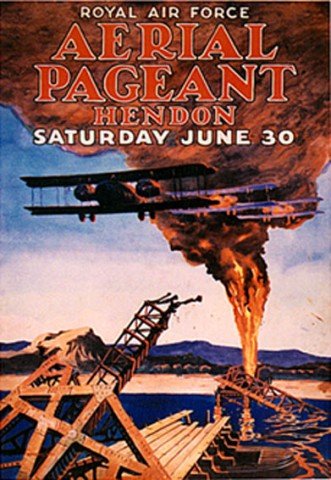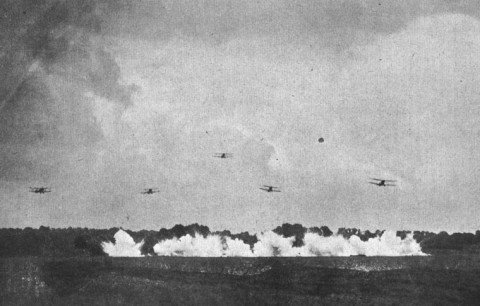The week before the 1932 RAF Display, Flight's editor commented on the rationale behind the theme chosen for the finale:
Sometimes the story composed for the set piece has been framed with some object, such as to obviate the criticisms of pacifists. Thus at one Display the enemy were called Pirates, so that nobody could object to their flaming end. This year we are to have a battle piece, pure and simple, which is the best thing of all. The R.A.F. exists to defend us, so we may as well get some idea (so far as sham fighting can give it) of what our aircraft would do to those who may attack us.1
But on the day (Saturday, 25 June 1932), the set piece seemed to disappoint Flight's correspondent. The set-up (above) was described as follows:
The scene this year represented a main aerodrome of the Enemy, situated alongside a disused fort in which large quantities of bombs were stored [...] The Enemy squadrons having been somewhat worrying, it was decided to carry out a heavy air attack to destroy this base.2
A squadron of 'our Single-Seater Fighters' strafes the aerodrome, drawing off 'the Enemy Fighter Squadron' in pursuit.3 Reconnaissance aircraft (Hawker Audaxes) report the scene to be clear, and so the bombers (Hawker Horsleys and Fairey IIIFs) are sent in.
...continue reading






